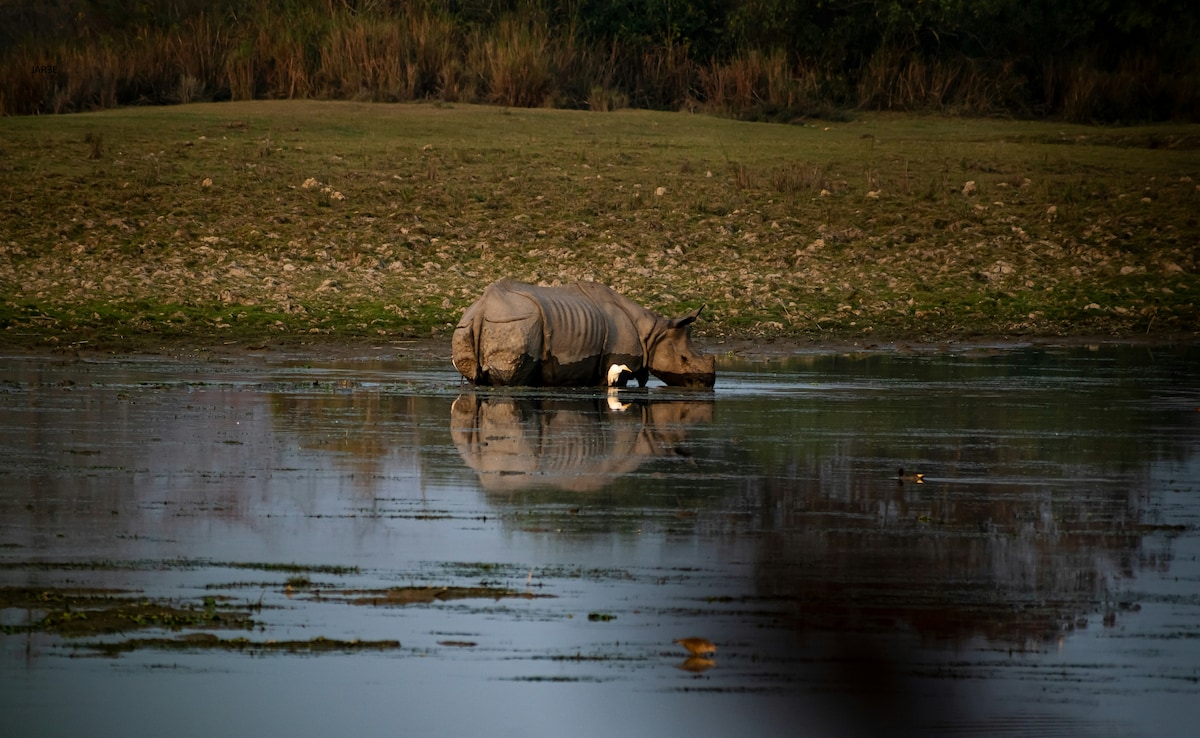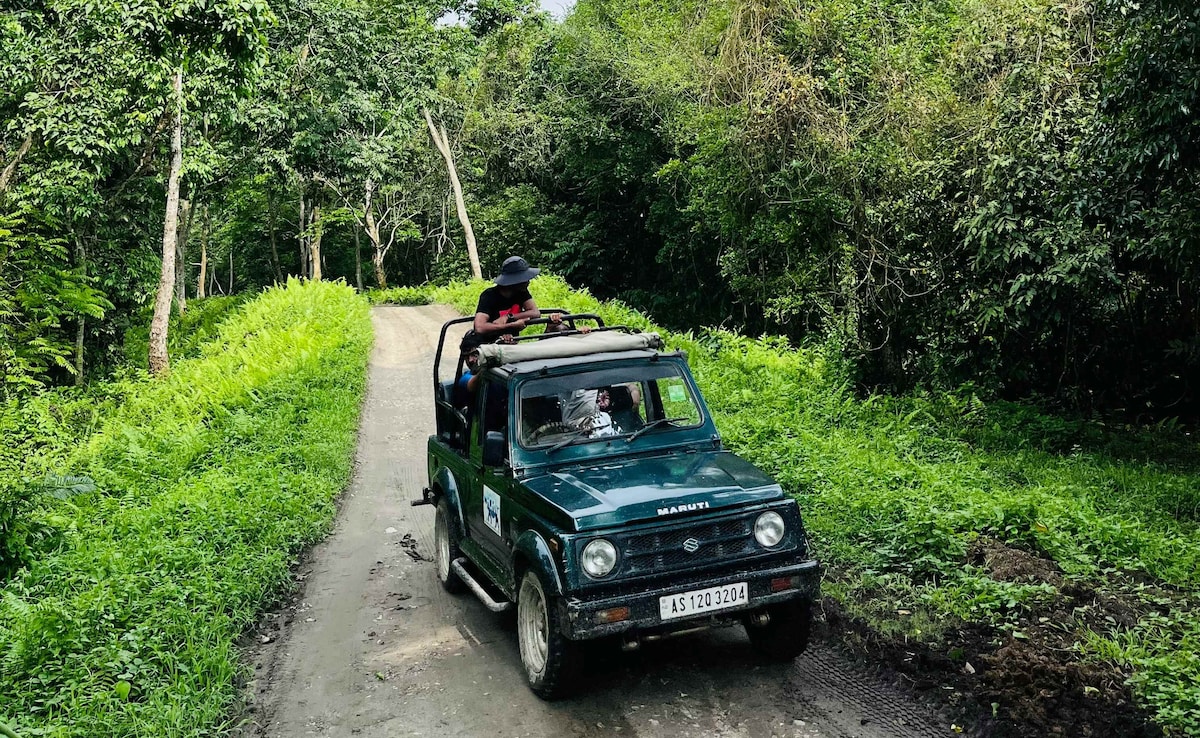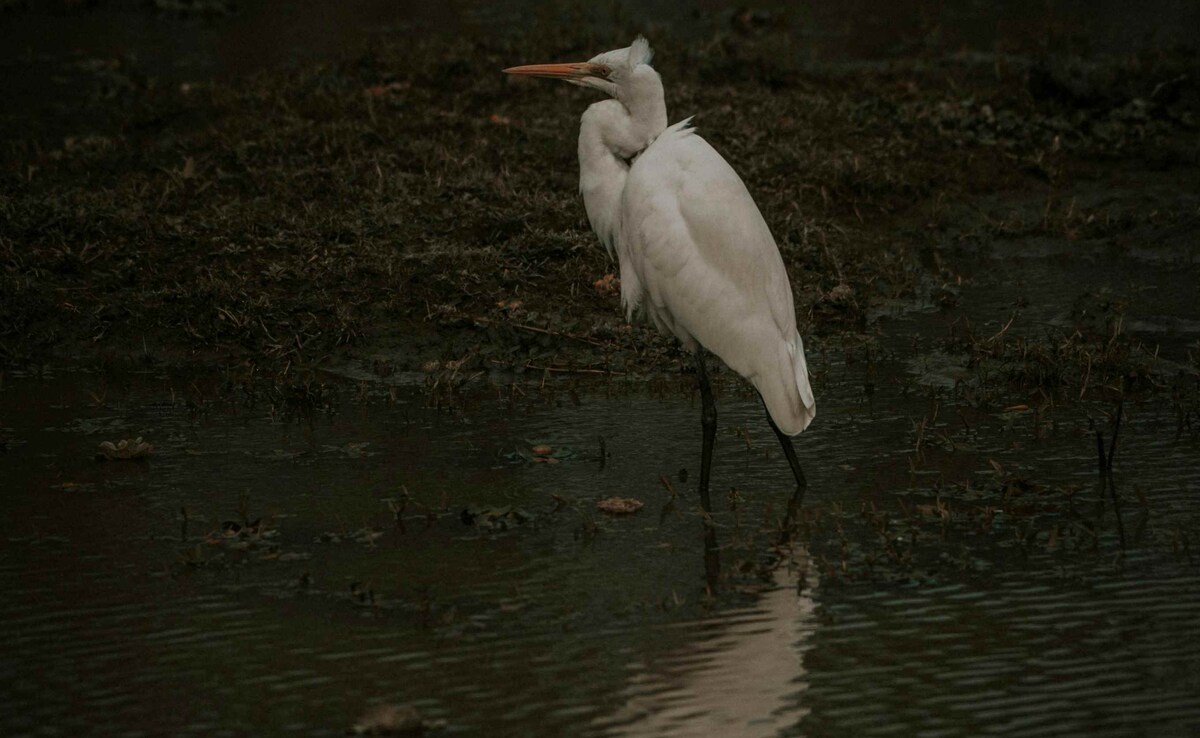
Once a quiet sanctuary nestled on the floodplains of the Brahmaputra, Kaziranga National Park in Assam is now roaring with activity - both literally and metaphorically. With 443,636 visitors recorded from October 1, 2024, to 2025, marking a whopping 35 percent increase from last year, Kaziranga has officially become the third most visited national park in India, after Ranthambore in Rajasthan and Periyar in Kerala.
But this remarkable rise isn't by chance or social media alone. A perfect mix of conservation success, infrastructure upgrades, and high-profile buzz has transformed this wildlife haven into a tourism powerhouse.
A Fourfold Leap In A Decade
To put this into perspective, these latest numbers mark a fourfold increase in footfall over the past ten years. Once hidden under the wraps of the Northeast's remoteness, Kaziranga is now dominating headlines and trending across travel blogs, Instagram reels, and tourism reports alike. It was also mentioned in The New York Times as a must-visit place in 2025.
Moshmi Kaul, Founder and Chief Travel Evangelist at Travel Stuti, says, "There has been a significant increase in the number of tourists visiting Kaziranga National Park in recent years. Comparing the figures from 2024-2025 to 2023-2024, we can see a 35 per cent rise in tourist numbers."

Kaziranga is known for its exceptional record in wildlife conservation. Credit: Unsplash
So, what exactly is drawing travellers, photographers, influencers, nature lovers, and families to this once offbeat wildlife park? NDTV spoke to six travel experts to understand this phenomenon.
1. Wildlife Conservation Success: A Haven For Rhinos
The top reason without a doubt is Kaziranga's exceptional record in wildlife conservation. It is home to about one-third of the world's population of the endangered one-horned rhinoceros - a figure that gives it unrivalled global significance.
Conservation here is not just a brochure claim; it's effort on the ground. From intense anti-poaching patrols equipped with drones and camera traps to regulated traffic within the park and safe wildlife corridors, the park ensures minimal human-animal conflict and maximum protection.
"Kaziranga's record-breaking tourist numbers this year are not by chance; they're the result of a well-planned convergence of government focus, enhanced wildlife experiences, and smarter infrastructure," says Jyoti Mayal, Chairperson of Tourism and Hospitality Skill Council (THSC), India.
Along with rhinos, the park also boasts sightings of the elusive Royal Bengal Tiger, the majestic Asian Elephant, wild water buffaloes, swamp deer, and, on rare lucky days, even the golden tiger or hoolock gibbon and more.
2. Beyond The Jeep
Indian tourists today want more than just a jeep safari - they crave immersive experiences. Kaziranga has responded with a variety of nature-inspired activities:
- Birdwatching in marshy wetlands rich with storks, hornbills and rare cranes
- Guided treks through the dense Sal and grass forests

Indian tourists today want more than just a jeep safari. Photo: Unsplash
- Boat safaris on the mighty Brahmaputra with views of river dolphins gliding alongside
- Cycling tracks flanked by silk cotton trees in full bloom during spring
- Elephant safaris offering close-up views of the park's wild flora and fauna
According to Moshmi, "These additional activities attract a broader range of tourists seeking varied experiences."
This expansion of offerings has made Kaziranga more than just a wildlife destination, it's now a full-fledged eco-adventure escape.
3. Improved Infrastructure And Connectivity
Another major draw has been the upgraded access. Reaching Kaziranga used to mean a bumpy drive and limited choices. Not anymore.
Thanks to road improvements and air connectivity to Guwahati from metros like Delhi, Kolkata and Bengaluru, reaching Kaziranga is now smoother and quicker. Within the park, eco-friendly accommodations, clean visitor centres, electric vehicles, and rest areas elevate the experience without harming the environment.

Direct flights to Guwahati from Delhi. Photo: Google/Author
"Improved infrastructure like good quality eco friendly and luxury hotels and resorts have come up," says Rajat Sawhney, Senior Vice President, Association of Domestic Tour Operators of India.
He adds, "Aggressive marketing by the Ministry of Tourism, DoNER and Assam Tourism to promote Kaziranga as a premier wildlife destination has attracted a lot of domestic and international tourists."
Another bonus? Affordability. With decent stays starting from Rs 2,000 per night, Kaziranga offers a budget-friendly alternative to more expensive reserves like Ranthambore or Corbett.
4. High-Profile Visits And Social Media Magic
Nothing works quite like a VIP endorsement; and over the last decade, Kaziranga has had several.
"Prime Minister Narendra Modi's overnight stay in 2024 and visits by Bhutan's King Jigme Khesar Namgyel Wangchuck in 2023 and other top officials grabbed headlines. This made the park famous not just in India but worldwide," highlights Shiva Kukreja, director, Rove Routes PVT LTD, a premier travel agency.
It also includes drop-ins by Bollywood stars like Priyanka Chopra (for a campaign for Assam tourism titled 'Awesome Assam') and Dia Mirza and more that have drawn serious national attention.
The buzz has translated into real-world interest, with travel influencers, vloggers and global media outlets now showcasing Kaziranga as a 'hidden gem', fuelling its transformation into a travel bucket list essential.
5. The Rise Of Offbeat Travel And Revenge Tourism
After Covid, travel habits have changed. Tourists are steering clear of the usual crowded spots and instead seeking offbeat, nature-rich, wellness-inspired escapes. Kaziranga ticks all these boxes.
Dinessh Kumar, secretary at Travel Agents Federation Of India explains that previously people had a notion about the Northeast that it is not a safe place to travel, which has changed now completely.
"Several hotspots in the North like Manali, Kullu and Mussoorie, often receive sudden rainfall which cause severe traffic jams, and somehow tourists feel 'cheated' and robbed of their vacation. However, ever since the focus has shifted to the Northeast, a lot of people are visiting Kaziranga and other places in the Northeast, and skipping the famous destinations," says Dinnesh.
Moreover, Assam's inclusion in The New York Times' "52 Places to Visit in 2025" list, as well as its recognition as an offbeat destination, along with coverage in Lonely Planet, National Geographic, and Condé Nast Traveller, has firmly placed it on the international radar, making it an ecotourism hotspot.
6. The Eco Marketing
The Assam government has been proactive in pushing Kaziranga into global conversations and making it an eco tourist spot. From the 12th International Tourism Mart held in 2024 in Kaziranga to smart campaigns around rhino conservation (including ones led by cricketer Rohit Sharma in 2019), the park's visibility has skyrocketed.
Policies have also favoured ecotourism and sustainability, with a focus on green transportation, homestays, and cultural immersion.
"Assam has made a conscious push for ecotourism - from launching electric vehicle safaris to developing homestays run by local communities that not only welcome tourists but also make them feel accountable," adds Jyoti.
7. The Local Economy Cycle
With increased tourism has come increased opportunity. Villages surrounding the park now thrive on tourism - be it through guiding, running cafés, selling souvenirs, or offering homestays. This helps two things: first, it creates a sense of luxury and a feel-good factor for tourists visiting Kaziranga, which might convert them into repeat visitors. Another reason is that it pushes more hotels and properties to come in, to boost tourism.

Kaziranga is haven for birdwatchers. Photo: Unsplash
"On my last visit, I got to experience sustainable farming practices that enrich the local community," shares Amruda Nair, Founder and CEO, Araiya Hotels & Resorts, a hospitality brand that is also eyeing to expand their presence in Kaziranga.
"Kaziranga is crucial for our hotel brand expansion due to its unique biodiversity and global recognition as a UNESCO World Heritage Site," adds Amruda.
Kaziranga Is No Longer India's Best-Kept Wildlife Secret
Kaziranga's stunning transformation proves that when conservation, community, and clever promotion come together, real change happens. The park has gone from being a niche northeastern wildlife reserve to a flagship of Indian ecotourism.
Whether you're an avid wildlife photographer, a casual weekend explorer, or someone simply wanting to trade the city noise for the songs of hornbills and dolphins, Kaziranga promises something extraordinary, and not only Indians, but foreign tourists too are realising it now.
Track Latest News Live on NDTV.com and get news updates from India and around the world

